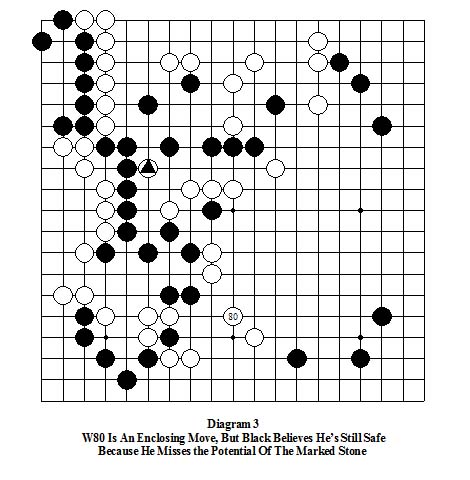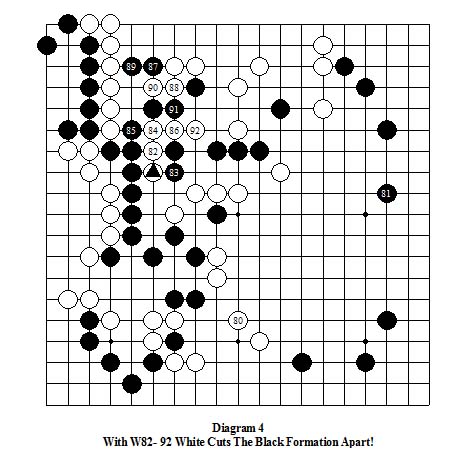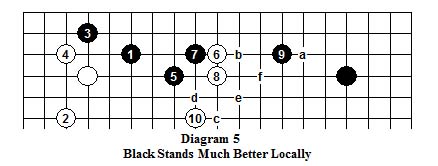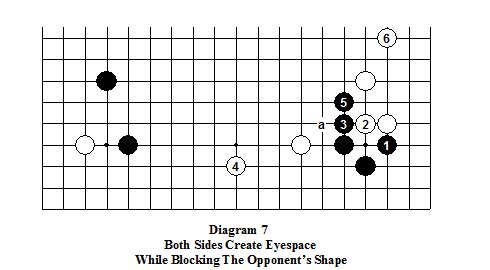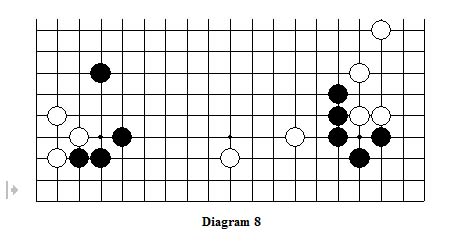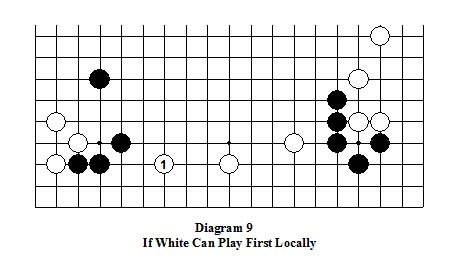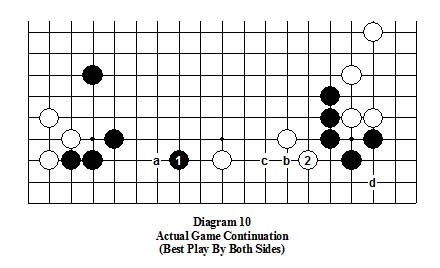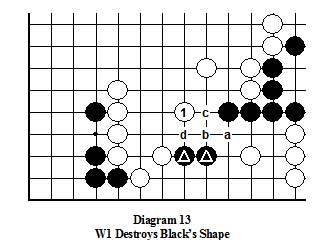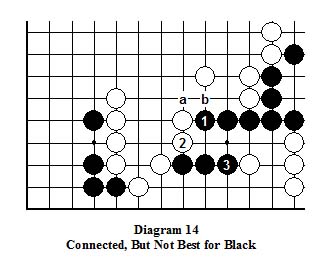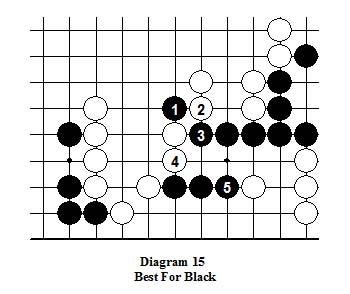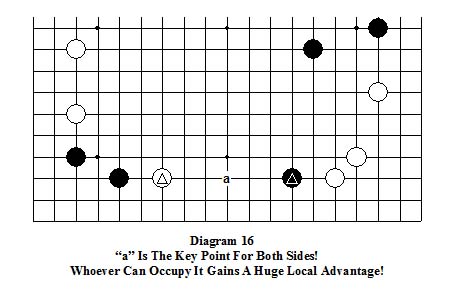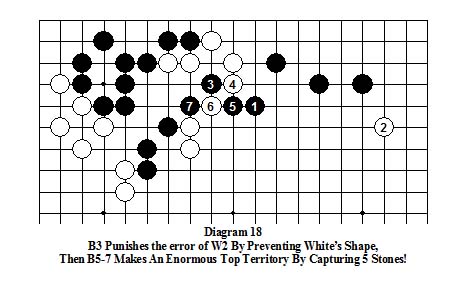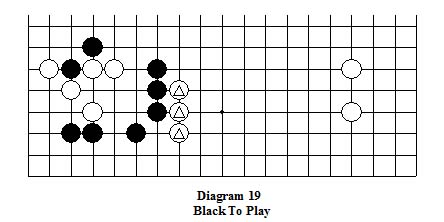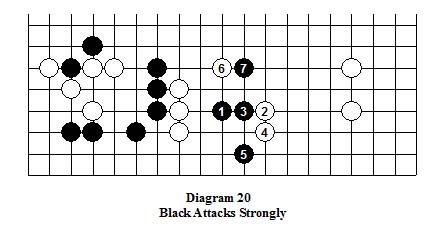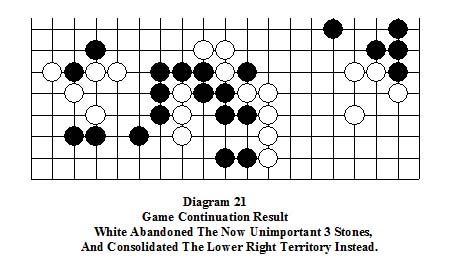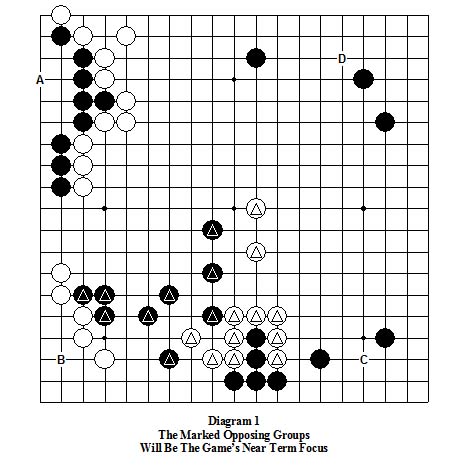
Diagram 1 In this early middle game between two 5D players, the only areas now fully controlled are A (Black) and B (White). They are somewhat different because although the Black “A” group is alive and takes about 8 points of territory, it’s almost completely contained and is therefore unimportant to the future course of play! The White “B” stones are somewhat important because they impact the adjacent still unsettled marked Black stones.
Although Black almost has control of the C and D areas, both are still open to a White invasion so these stones are at least moderately important.
The game’s main focus from this point on will center on the fact that each side has a large (marked), still unsettled group in the lower center. Black’s group has much better eyeshape, but White has more open space available, so there’s no real advantage on that score at the moment to either side.

